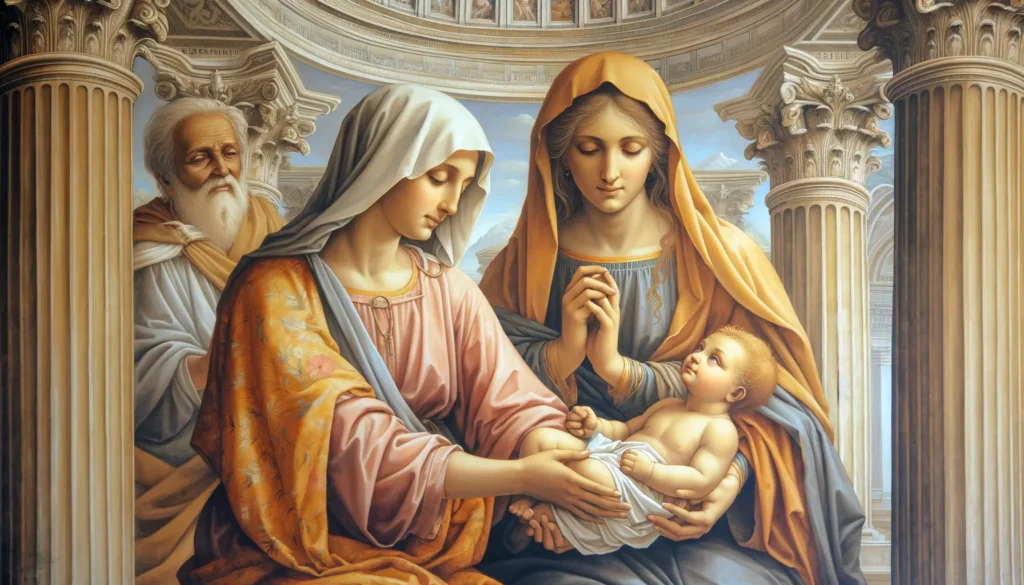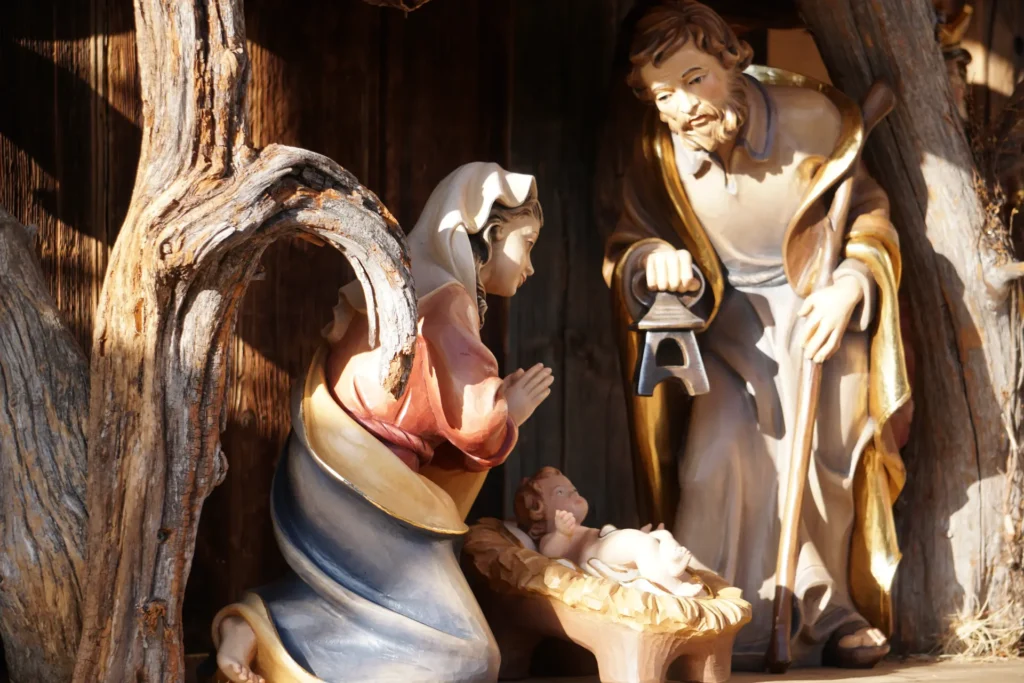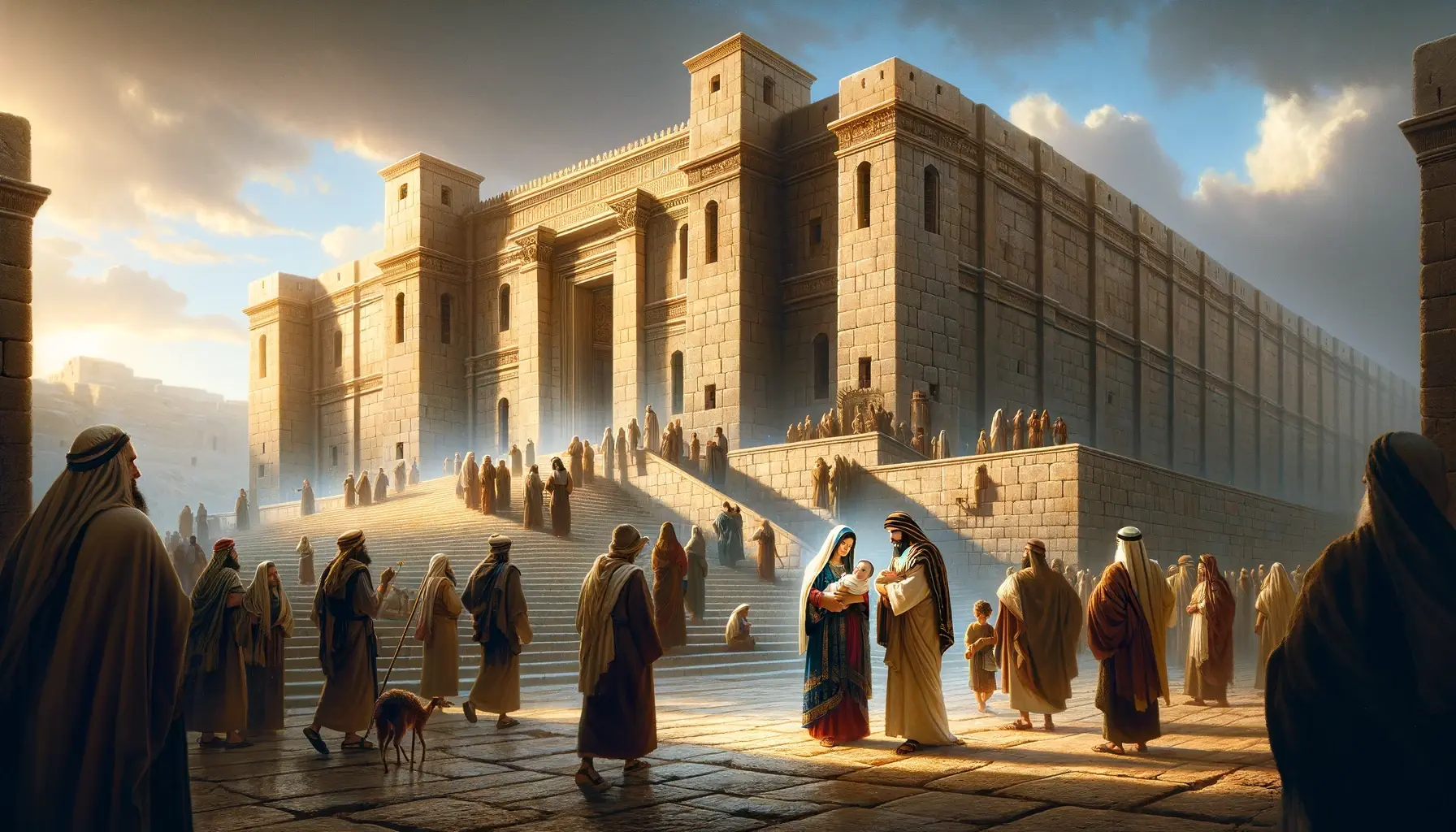I. Introduction
The story of Jesus’ birth is told with profound simplicity in the Gospel of Luke. It narrates the miraculous birth of Jesus in Bethlehem, the appearance of angels to shepherds, and the humble beginnings of a Savior destined to die so that He could save the world. This narrative, found in Luke 2:1-20, sets the stage for the extraordinary life and sacrificial death of Jesus Christ.
Within this larger narrative, the Bible often presents smaller, yet significant stories, that shine light on the miraculous birth and mission on Jesus. These are like threads woven into the fabric of the main story, providing additional layers of meaning and insight. In the case of Jesus’ birth narrative, two such stories stand out: Simeon’s prophetic encounter with Jesus (Luke 2:25-35) and Anna’s faithful witness (Luke 2:36-38). Both encounters occur shortly after Jesus’ birth and offer profound insights into His divine nature and the impact of His arrival.
In this article we will be exploring these two stories. We will delve into Simeon’s moment of revelation and prophecy about Jesus, and Anna’s recognition and proclamation of Jesus as the Messiah. These stories not only affirm Jesus’ identity as the Son of God but also enrich our understanding of His mission on earth. They serve as vital complements to the main narrative, offering a deeper and more nuanced picture of the early acknowledgment of Jesus as the Messiah and the Savior of humanity.
II. Simeon’s Prophetic Encounter with Jesus (Luke 2:25-35)
In the Gospel of Luke, we meet Simeon, a man of deep faith and righteousness, living in Jerusalem. Described as “righteous and devout,” Simeon was eagerly waiting for the “consolation of Israel,” and the Holy Spirit was upon him (Luke 2:25). This brief introduction paints a picture of a man deeply connected to God and expectantly hoping for the fulfillment of God’s promises.
The “consolation of Israel” found in Luke 2:25, refers to Simeon’s anticipation of the coming of the Messiah, who was expected to bring deliverance to the people of Israel. In this context, the term “consolation of Israel” is a messianic expectation rooted in Jewish thought and scripture.
This expectation was based on the prophecies found in the Old Testament, particularly those in Isaiah, which spoke of a coming figure who would provide comfort and redemption to God’s people. For example, Isaiah 40:1 says, “Comfort, comfort my people, says your God.” This prophecy and others like it fueled the hope among the Jewish people that a savior or redeemer would arise to deliver them from their struggles, including foreign oppression and spiritual waywardness.
Simeon’s encounter with Jesus is a moment of profound significance. Guided by the Holy Spirit, he came into the temple courts just as Mary and Joseph brought in the child Jesus to the temple (Luke 2:27). Jewish Law required that the first-born son be Consecrated as a reminder of the deliverance of the Israelites from Egypt (Exodus 13:1-2, 12-16). Upon seeing Jesus, Simeon immediately recognized Him as the Messiah. He took Jesus in his arms and praised God, saying, “Sovereign Lord, as you have promised, you may now dismiss your servant in peace. For my eyes have seen your salvation, which you have prepared in the sight of all nations: a light for revelation to the Gentiles, and the glory of your people Israel” (Luke 2:29-32).
This proclamation highlights the fulfillment of Old Testament prophecies and Jesus’ role as a savior not just for the Jews, but for all humanity, a light to the Gentiles. Simeon’s words echo the prophecies of Isaiah, who spoke of a servant of God who would be a light to the nations (Isaiah 42:6).
Furthermore, Simeon’s revelation holds deep theological implications. He foretold that Jesus would be a figure who would cause the rising and falling of many in Israel and be a sign that would be spoken against (Luke 2:34). He also prophetically spoke to Mary about the future suffering of Jesus, saying, “And a sword will pierce your own soul too” (Luke 2:35). This foreshadows the pain and sorrow Mary would experience at the crucifixion, highlighting the cost of redemption and the profound impact of Jesus’ mission on those closest to Him.
Through Simeon’s encounter, we gain a deeper understanding of Jesus’ mission and the broad scope of His redemptive work. It’s a powerful moment that bridges the Old and New Testaments, showing Jesus as the fulfillment of longstanding prophecies and the beacon of hope for all people.
III. Anna’s Faithful Witness (Luke 2:36-38)
Anna, a prophetess, is introduced in Luke’s Gospel as an exemplary figure of devotion and faith. She was of great age, having lived with her husband seven years after her marriage, and then as a widow until she was eighty-four. She never left the temple but worshiped night and day, fasting and praying (Luke 2:36-37). This description of Anna sets the stage for her deep spiritual insight and commitment to God.
The significance of Anna’s encounter with Jesus at the temple demonstrates the remarkable insight given to her by the Holy Spirit. When she came up to Mary, Joseph, and Jesus at that moment, she gave thanks to God and spoke about the child to all who were looking forward to the redemption of Jerusalem (Luke 2:38). Her recognition of Jesus as the Messiah was immediate and intuitive, demonstrating her spiritual discernment. Anna’s response is a powerful testament to her faith and her understanding of God’s plan for salvation.
The concept of the “redemption of Jerusalem,” as mentioned in Luke 2:38 signifies the deep-rooted Jewish hope for deliverance and restoration. Central to the Jewish faith, this theme of redemption permeates the Old Testament, intertwined with the anticipation of the Messiah. The expectation is that He would be the one who would establish God’s rule, usher in justice, and return Israel to a state of divine blessing and peace.

The Old Testament is replete with references to this expectation. Isaiah’s prophecies, for instance, speak vividly about the redemption and restoration of Israel. Passages like Isaiah 52:9 celebrate the comfort and redemption of Jerusalem by the Lord, while Isaiah 59:20 foretells the arrival of a Redeemer in Zion. Similarly, Jeremiah, in Jeremiah 31:31-34, speaks of a new covenant that God will establish with Israel and Judah, signaling a profound spiritual renewal and restoration.
Ezekiel’s vision in Ezekiel 37, featuring the valley of dry bones, is emblematic of the national and spiritual revival of Israel. Additionally, the Psalms contain numerous references to deliverance, such as Psalm 130:7-8, which speaks of the Lord’s unfailing love and His redemption of Israel from sin.
During Jesus’ time, Israel was under Roman rule, and this longing for redemption was often understood in the context of political and national liberation. However, the New Testament reveals that the redemption brought by Jesus transcended political deliverance, offering a more profound, spiritual salvation to all humanity, not just to the Jews.
In recognizing Jesus, Anna was acknowledging Him as the fulfillment of these ancient hopes and prophecies, the one who would bring about not only Israel’s restoration but also the salvation and reconciliation of all people with God. After seeing Jesus, she talked about the child to everyone who hoped for Jerusalem’s deliverance. We might say that Anna is one of the first evangelists in the New Testament, as she actively shared the good news of Jesus birth and promise with others.
IV. Synthesis of these Stories and their Contribution to the Main Narrative
The stories of Simeon and Anna are not just mere additions to the narrative of Jesus’ birth; they significantly deepen our understanding of His identity and mission. Through Simeon’s prophetic declaration and Anna’s faithful witness, we gain a more comprehensive view of Jesus as the Messiah and the Savior of both Jews and Gentiles.
Simeon’s revelation in the temple, as he held the infant Jesus, provided a profound affirmation of Jesus’ messianic identity. His words, “For my eyes have seen your salvation, which you have prepared in the sight of all nations: a light for revelation to the Gentiles, and the glory of your people Israel” (Luke 2:30-32), underscore the universal scope of Jesus’ mission. This encounter reveals Jesus as the fulfillment of the long-awaited prophecies, a pivotal moment that bridges the Old and the New Testaments.
Similarly, Anna’s role as a prophetess who recognized Jesus and immediately began to tell others about Him highlights the early acknowledgment of Jesus as the Redeemer. Her actions demonstrate the spreading of the Gospel, starting from the very early stages of Jesus’ life. She represents the active participation of the faithful in recognizing and proclaiming the coming of the Messiah.

These substories enrich the overarching narrative of Jesus’ birth and early life by providing additional layers of meaning. They illustrate how Jesus’ arrival was anticipated and recognized by those devout in faith and deep in spiritual understanding. Both Simeon and Anna serve as models of faith and recognition, their stories echoing the larger themes of hope, redemption, and the fulfillment of God’s promises. By including these encounters in the Gospel, Luke provides a more nuanced and complete picture of the impact of Jesus’ birth, one that resonates with the faithful across generations, affirming Jesus’ identity as the Son of God and salvation for all.




